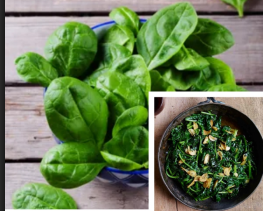Let’s face it, eating vegetables can sometimes feel like a chore. But what if we told you that with just a few tweaks, your veggies could go from bland to fabulous, and even fun to eat? The secret is knowing which vegetables shine in the summer months, how to prepare them, and what common mistakes to avoid. In this article, we’re diving into the world of healthy veggies, uncovering what works, what doesn’t, and how to take your veggie game to the next level. Get ready for a delicious and nutritious season!
Leafy Greens Heroes of the Veggie World
When it comes to healthy eating, leafy greens are the gold standard. Think spinach, kale, arugula, and Swiss chard. These veggies are a powerhouse of vitamins, minerals, and antioxidants. They’re packed with fibre and rich in vitamins A, C, and K, which are essential for everything from immune health to glowing skin.

How to Make It Work:
Sautéing: A quick sauté in olive oil with garlic and a squeeze of lemon can turn kale or spinach into a flavorful side dish that complements almost any meal.
Creative Ideas: Use leafy greens beyond the salad bowl. Add them to omelettes, pasta dishes, or wraps. You can even throw a handful into your morning smoothie or blend them into a fresh pesto for a veggie-packed twist.
Quick Pickling: Try pickling greens like arugula or kale for a fresh, tangy bite. They’ll add a zesty crunch to tacos, sandwiches, or grain bowls.
Root Vegetables — A Perfect Summer Comfort
When you think of root vegetables, you might picture hearty seasonal dishes, but root veggies like sweet potatoes, beets, carrots, and parsnips also shine during the warmer months. They’re packed with fibre and have natural sweetness, making them a hit for anyone with a sweet tooth.
How to Make It Work:
Grilling: Skip the oven and fire up the grill! Grilling root vegetables like sweet potatoes or carrots brings out their natural sweetness and adds a smoky depth of flavour. Try grilling thin slices of sweet potatoes or parsnips for a crispy, caramelised bite.
Rösti or Hash: Try turning your root vegetables into crispy rösti or hash for a delightful breakfast or brunch dish. Add eggs, avocado, or even smoked salmon for a complete meal.
Cold Dishes: Root veggies don’t have to be served hot. Roasted beets and carrots make a delicious addition to summer salads. Toss them with fresh greens, goat cheese, and a balsamic glaze for a refreshing, vibrant dish.
Cruciferous Veggies — Power Up with the Green Giants
Cruciferous vegetables, like broccoli, cauliflower, Brussels sprouts, and cabbage, are high in fibre and loaded with vitamins C, E, and K. They’re known for their cancer-fighting properties and are perfect for supporting a healthy immune system. Plus, they’re versatile and can be used in various dishes. These vegetables are often overlooked but should definitely be in your weekly veggie rotation. They’re packed with nutrients that support detoxification and overall health, but their flavour can be intimidating if not prepared properly.
How to Make It Work:
Roasting: When in doubt, roast! Roasting cruciferous vegetables at a high heat with a drizzle of olive oil, salt, and pepper caramelises their natural sugars and brings out a rich, sweet flavour. Try roasting Brussels sprouts with a sprinkle of parmesan for a cheesy, savoury snack.
Fermentation: Get your gut health on track by fermenting cabbage into homemade sauerkraut or kimchi. These tangy, probiotic-packed additions can make a great side dish or topping for tacos and burgers.
Cauliflower Rice: Cauliflower is a surprisingly versatile vegetable. You can turn it into rice by simply grating or pulsing it in a food processor, and it makes an excellent low-carb substitute in stir-fries or grain bowls.
General Tips for All Veggies:
Seasoning is Key: Don’t be afraid to experiment with spices. A good seasoning mix, think garlic powder, smoked paprika, cumin, or curry, can elevate any vegetable, making it a flavorful main or side dish.
Pairing with Healthy Fats: For optimal nutrient absorption, pair your veggies with healthy fats like avocado, olive oil, or nuts. These fats help absorb fat-soluble vitamins and enhance the flavour of your dish.
Quick and Easy Prep: If you’re short on time, microwaving veggies for a quick steam is a great way to keep nutrients intact without spending too much time in the kitchen. You can also buy pre-washed and pre-chopped veggies to make meal prep even easier.
Eating healthy doesn’t have to mean boring, bland meals. With the proper preparation and creativity, veggies can become the star of your plate. Whether you’re sautéing leafy greens, grilling root vegetables, or roasting cruciferous veggies, you’ve got endless possibilities for adding nutrient-packed foods to your diet. So go ahead, embrace the veggie revolution and make this season the one where you discover new, exciting ways to eat your greens!

